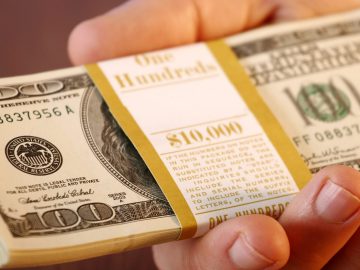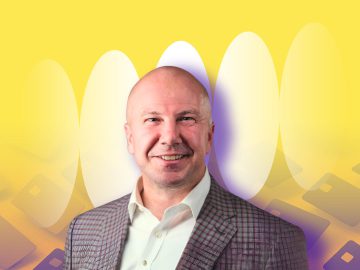RyanJLane / iStock.com
Commitment to Our Readers
GOBankingRates’ editorial team is committed to bringing you unbiased reviews and information. We use data-driven methodologies to evaluate financial products and services – our reviews and ratings are not influenced by advertisers. You can read more about our editorial guidelines and our products and services review methodology.
20 Years
Helping You Live Richer
Trusted by
Millions of Readers
No matter how great of a budgeter you might be, it’s essential to maintain at least $1,000 in your checking account. You never want to be caught with unexpected expenses and not have enough money to cover them.
“Maintaining a $1,000 buffer in your checking account is not just a good idea, it’s a financial imperative,” said Chris Young, personal finance consultant and co-founder of Coins Value. “This cushion is a powerful safeguard against overdraft fees, unexpected expenses and the stress of living paycheck to paycheck.”
Read below for how to make it happen.
Open a Second Checking Account
“From a behavioral finance perspective, it can be very easy to spend your checking account down to $0 each month,” said Charlie Pastor, certified financial planner and contributing expert at The Motley Fool Ascent.
When your paycheck is deposited as a lump sum, it is easy to subconsciously view the amount in your account as your spending “limit.”
While this can make it difficult to accumulate funds long term, Pastor said there are a few ways that savers can avoid the spend-down trap.
“One option is to open a second checking account with the same financial institution, and manually transfer ‘untouchable’ funds into that account on a regular basis.”
He said this approach allows you to safely spend down the funds in your primary checking account, without jeopardizing your ability to cover an unexpected expense or save for a financial goal.
And if tapping into your long-term savings is too tempting, Pastor advised opening an account at a different bank and giving a trusted contact the log-in information.
He said, “This ‘out of sight, out of mind’ strategy can put a soft lock on your money until you really need it.”
Automate, Automate, Automate
When your paycheck hits your checking account, experts recommend setting up an automatic transfer of 10% of it to a separate savings account.
Young said this “pay yourself first” strategy ensures you’re consistently building your buffer.
Make your money work for you

Thanks!

“Automation is the secret weapon in the battle against financial instability. By removing the temptation to spend first and save later, you’re guaranteeing your financial future with every paycheck.
“As a financial advisor,” he added, “I worked with a client who struggled to keep even $100 in her account. We implemented this automation strategy and, within six months, she had her $1,000 buffer and was well on her way to building a robust emergency fund.
“The psychological impact was profound: She went from constant anxiety about her finances to feeling in control and empowered.”
Another strategy, according to Pastor, is to ask your employer to automate for you.
“Sometimes, the best way to avoid behavioral finance pitfalls is to take yourself out of the equation.”
If manually transferring funds between accounts each month is challenging, you can likely ask your employer to split up your check to be deposited into multiple accounts automatically.
Pastor said, “Many banks also offer recurring automatic transfers between accounts.”
Audit Your Recurring Expenses Ruthlessly
Another crucial tip, according to Young, is to audit your subscriptions and recurring expenses ruthlessly.
“The average American spends $237.33 monthly on subscriptions, often without realizing it.”
He advised going through your bank statements with a fine-tooth comb and canceling any subscriptions you’re not actively using.
“Think of each subscription as a small leak in your finances,” he said. “Plug those leaks, and you’ll be amazed at how quickly your account balance rises.”
Embrace the Power of Micro-Saving
Every time you make a purchase, round up to the nearest dollar and transfer the difference to your savings. Many banks offer this feature automatically.
“It might seem insignificant, but these small amounts add up quickly,” Young said. “If you make just five transactions daily, you could save an average of $54.75 monthly. That’s $657 per year — more than half your $1,000 goal!
“Remember, building financial stability is a journey, not a destination. These strategies, when implemented consistently, can transform your financial life. Don’t just aim for $1,000 — make it your launching pad to greater economic freedom.”
More From GOBankingRates




